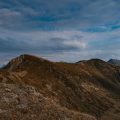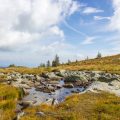Introduction to Ben Nevis
Ben Nevis, standing proudly at 1,345 metres above sea level, holds the distinguished title of the highest peak in the United Kingdom. Located near the historic town of Fort William in the Scottish Highlands, this formidable mountain is a beacon for hillwalkers, climbers, and outdoor enthusiasts from across Britain and beyond. Revered as much for its challenging ascent as for its sweeping vistas over the rugged Highland landscape, Ben Nevis occupies a central place in Scottish heritage and national identity. Its Gaelic name, “Beinn Nibheis”, hints at its imposing nature—often translated as “mountain with its head in the clouds” or “venomous mountain”. For generations, Ben Nevis has served not only as a geographic landmark but also as a symbol of endurance and adventure, embodying Scotland’s wild spirit and natural grandeur. Whether you are drawn by its legendary status or simply seeking to experience one of Britain’s most iconic natural wonders, Ben Nevis offers an unforgettable journey steeped in history and cultural significance.
2. Planning Your Ascent
Tackling Ben Nevis, the UK’s highest peak, demands careful planning and respect for the mountain’s ever-changing conditions. Proper preparation not only enhances your experience but is vital for safety, especially given the notorious unpredictability of Scottish weather. Below, we outline the essential aspects to consider before setting off.
Essential Preparations
Before attempting the ascent, ensure you are physically prepared for a sustained climb of at least 7-9 hours (round trip). Familiarise yourself with the route—most walkers use the Mountain Track, which is well-maintained but still demanding. Inform someone of your plans and estimated return time.
Recommended Kit List
| Item | Purpose |
|---|---|
| Waterproof Jacket & Trousers | Protection against rain and wind |
| Sturdy Hiking Boots | Support and grip on rocky terrain |
| Warm Layers (Fleece/Jumper) | Insulation as temperatures drop towards the summit |
| Hat & Gloves | Essential even in summer due to chill at altitude |
| Map & Compass (and knowledge to use them) | Navigational backup in case of low visibility or GPS failure |
| Food & Water (at least 2 litres) | Sustenance for the duration of your hike |
| First Aid Kit & Whistle | For minor injuries and emergency signalling |
| Headtorch & Spare Batteries | Covers unexpected delays or poor light conditions |
| Mobile Phone (fully charged) | Emergency contact; note coverage may be patchy at altitude |
Weather Considerations
The weather on Ben Nevis can shift rapidly, with cloud cover, rain, and strong winds common throughout the year. Temperatures at the summit are often several degrees colder than at sea level, and snow can linger into late spring. Always check the latest Met Office forecast before departure and be prepared to turn back if conditions deteriorate.
Suitable Timeframes for Tackling Ben Nevis
The best period to attempt Ben Nevis is typically between late May and early September when daylight hours are longer and paths are less likely to be icy. Even in summer, it is not uncommon to encounter challenging weather, so flexibility in your plans is crucial. Avoid winter ascents unless you have specialist skills and equipment for snow and ice conditions.
A thorough approach to planning ensures a safer and more enjoyable experience as you take on this iconic British challenge.

3. Popular Routes and Their Challenges
The Mountain Track: Accessibility and Steady Ascent
The most frequented route up Ben Nevis is the Mountain Track, often referred to as the “Tourist Path.” Starting from Glen Nevis Visitor Centre, it offers a well-trodden path that is accessible for walkers with reasonable fitness. The route spans approximately 17 kilometres (return) and involves an ascent of around 1,350 metres. While the trail is straightforward in good weather, its length and persistent gradient can be physically demanding, especially for those unaccustomed to mountain walking. The final section traverses a boulder field, where navigation becomes challenging in poor visibility. Despite its popularity, the Mountain Track should not be underestimated—weather conditions can change rapidly, and adequate preparation is essential.
Carn Mor Dearg Arête: A Test of Skill and Nerve
For seasoned hillwalkers seeking a more exhilarating experience, the Carn Mor Dearg Arête presents a striking alternative. This route begins from the North Face car park and initially ascends Carn Mor Dearg, before traversing the celebrated arête—a narrow, rocky ridge offering dramatic views and requiring confident footwork. The arête itself demands a head for heights and some scrambling ability, making it unsuitable for novices or those uncomfortable with exposure. After conquering the ridge, climbers must negotiate steep scree slopes before joining the main summit plateau. In exchange for its greater challenge, this route rewards walkers with unparalleled vistas of Ben Nevis’s imposing North Face and a sense of remoteness absent from the busier Tourist Path.
Comparing Difficulty and Scenic Value
While both routes ultimately lead to the summit trig point, their character differs markedly. The Mountain Track is approachable yet strenuous due to its sustained ascent and potential crowds during peak season; it offers fine panoramas over Glen Nevis but lacks the dramatic mountain architecture found elsewhere on Ben Nevis. In contrast, the Carn Mor Dearg Arête showcases rugged Highland scenery at its most spectacular but demands higher levels of fitness, route-finding skills, and confidence with exposure. For group leaders or experienced hikers looking to guide others, careful assessment of party ability and prevailing weather conditions is paramount when choosing between these two iconic ascents.
4. Navigating Ben Nevis Safely
Ben Nevis, as the UK’s highest peak, presents both a rewarding challenge and distinct risks for hillwalkers. Whether you are a seasoned mountaineer or a first-time visitor to the Scottish Highlands, prioritising safety is essential for a successful ascent.
Essential Safety Tips for Hillwalkers
- Plan Ahead: Research your chosen route thoroughly and be realistic about your fitness and experience levels.
- Check the Weather: Conditions on Ben Nevis can change rapidly. Always consult the latest forecast from reliable sources like the Met Office or MWIS (Mountain Weather Information Service).
- Equip Properly: Carry appropriate clothing layers, waterproofs, sturdy boots, map, compass, fully charged phone, and emergency supplies.
- Leave Your Route: Inform someone of your planned route and expected return time before setting off.
- Pace Yourself: Allow plenty of time for both ascent and descent; fatigue is a common cause of accidents.
Key Navigation Points on Ben Nevis
The most popular route, the Mountain Track (often called the Tourist Path), remains well-defined for much of the climb. However, poor visibility—common in the Highlands—can make navigation challenging near the summit plateau. The following table highlights critical navigation points:
| Navigation Point | Description | Caution |
|---|---|---|
| Halfway Lochan (Lochan Meall an t-Suidhe) | A popular rest point roughly halfway up; good spot to assess weather/energy levels. | If tired or weather worsens, consider turning back here. |
| Zig-Zags Section | Steep switchbacks leading to higher slopes; path can be eroded in places. | Tread carefully, especially after rain or in icy conditions. |
| Summit Plateau & Cairns | The final stretch is marked by stone cairns; essential in mist/fog to avoid cornices and steep drops. | Do not stray from cairns; drops are perilously close in poor visibility. |
Staying Informed: Mountain Conditions in the Scottish Highlands
The Scottish Highlands are renowned for their unpredictable weather. Before setting out, consult:
- MWIS – Mountain Weather Information Service
- Met Office Mountain Forecasts
- Scottish Avalanche Information Service (SAIS), especially during winter months
- Local ranger stations or visitor centres for up-to-date advice on trail conditions and hazards
Additional Local Advice
If uncertain about conditions or your own preparedness, consider joining a guided walk with an experienced leader familiar with Ben Nevis and local weather patterns. Respecting the unique challenges of this Highland giant is key to a safe and memorable adventure.
5. Respect for Nature and Local Etiquette
Ben Nevis, as the UKs highest peak, attracts thousands of walkers each year. With its popularity comes the responsibility to preserve its unique environment and respect local customs. Adhering to responsible hiking practices ensures that this treasured landscape remains pristine for future generations.
Leave No Trace Principles
One of the most fundamental aspects of exploring Ben Nevis is following the Leave No Trace principles. Always take your litter home, avoid disturbing natural features, and stick to established paths to minimise erosion. Even biodegradable waste, such as fruit peels, should not be left behind, as it can disrupt the local ecosystem.
Respecting Wildlife
The Ben Nevis area is home to diverse flora and fauna, some of which are rare or sensitive to disturbance. Observe wildlife from a distance and never feed animals, as human food can be harmful. During nesting season, be especially mindful to avoid disturbing birds or trampling fragile vegetation.
Understanding Local Customs
The Highlands have a rich cultural heritage and a strong sense of community. When passing through villages like Fort William or encountering locals on the mountain, a friendly greeting is customary. It is also good etiquette to yield right of way to those ascending steep sections and to close any gates you open on farmland. Taking time to learn about Scottish access rights and local guidance demonstrates respect for both people and place.
By upholding these standards of responsible hiking and cultural awareness, you contribute positively to the Ben Nevis experience—for yourself, fellow hikers, and the environment alike.
6. Post-Climb Experiences in Fort William
Completing your ascent of Ben Nevis is an achievement worth celebrating, and there’s no better place to unwind than the welcoming town of Fort William. After a day on the mountain, you’ll find a range of inviting options for relaxation, refreshment, and soaking up local culture.
Pubs with Character
Fort William boasts a selection of traditional pubs where you can toast your success. The Grog & Gruel is a perennial favourite among walkers, offering cask ales and hearty fare in a convivial atmosphere. If you’re after live music and local banter, The Ben Nevis Bar provides both, along with an extensive whisky selection—a nod to Scotland’s proud distilling heritage.
Culinary Highlights
For those seeking a satisfying meal, The Crannog Seafood Restaurant, perched on the pier overlooking Loch Linnhe, serves up the freshest catch from Scottish waters. Alternatively, The Lime Tree An Ealdhain delivers modern Scottish cuisine in a charming art hotel setting—perfect for those who appreciate quality ingredients and creative presentation.
Cultural Attractions
Beyond food and drink, Fort William offers cultural sites that provide insight into the region’s rich history. The West Highland Museum, located in the heart of town, showcases artefacts ranging from Jacobite memorabilia to mountaineering exhibits—a fitting tribute to your own adventure. For something more immersive, take a stroll along the historic High Street or explore the nearby Old Inverlochy Castle, where centuries-old ruins tell tales of Scotland’s turbulent past.
Relaxation and Reflection
If it’s tranquillity you seek post-climb, consider a gentle walk along the banks of Loch Linnhe or a visit to one of the local coffee houses such as Rain Bakery, where you can enjoy artisan pastries while reflecting on your accomplishment. Many climbers also choose to mark their achievement by visiting one of the outdoor outfitters on High Street to pick up a commemorative memento.
Making the Most of Your Ben Nevis Adventure
Your journey doesn’t end at the summit—Fort William offers ample opportunities to celebrate your achievement, connect with fellow adventurers, and immerse yourself in Highland hospitality. Whether raising a glass in a cosy pub or exploring local landmarks, these post-climb experiences ensure your time in the shadow of Ben Nevis is truly unforgettable.


